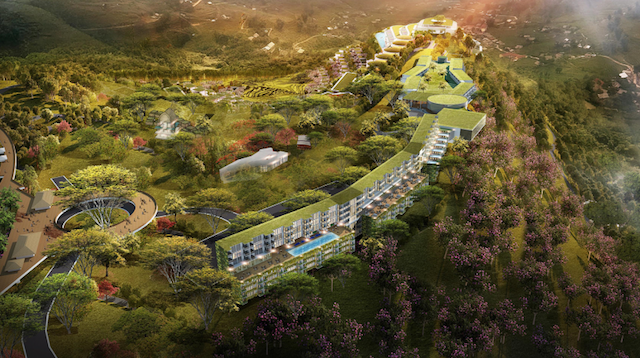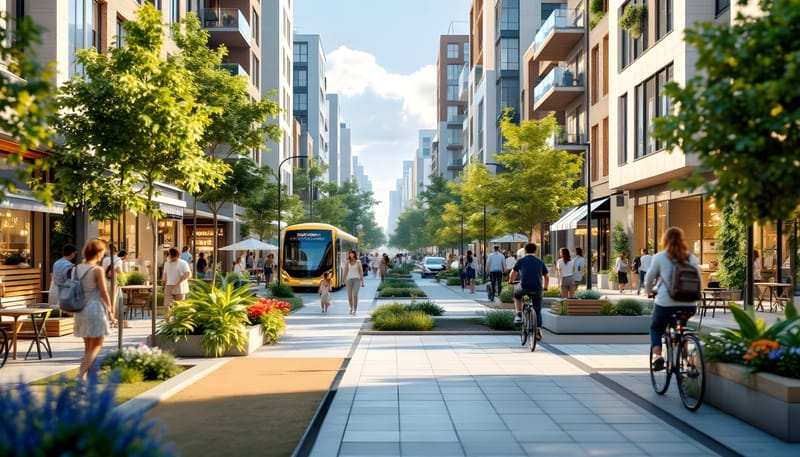Sapa and Lao Cai: A Rising Star in Luxury Real Estate
Sapa, known primarily for its breathtaking landscapes and rich cultural tapestry, is now making waves in a different sector — the luxury real estate market. Along with Lao Cai, its provincial seat, Sapa is poised to become a significant player in Vietnam's luxury real estate arena, attracting both tourists

Sapa, known primarily for its breathtaking landscapes and rich cultural tapestry, is now making waves in a different sector — the luxury real estate market. Along with Lao Cai, its provincial seat, Sapa is poised to become a significant player in Vietnam's luxury real estate arena, attracting both tourists and investors alike.
A Flourishing Real Estate Landscape
According to a report from Savills Vietnam, a leading real estate consultancy, both Lao Cai and Sapa have demonstrated vast potential in new real estate segments, including villas, five-star hotels, and condotels. Notably, these regions have drawn the attention of major real estate giants like Bitexco, the Sun Group, Vingroup, the Thien Minh Group, and Sapa Land.
One such standout project is Sapa Jade Hill, which is rapidly emerging as a cornerstone in the resort property segment. These investments are not just confined to residential spaces. They are also ushering in an era of modern amenities, including shopping centers, amusement parks, shophouses, a cable car, and luxury hotels. Ms. Do Thi Thu Hang, Head of Research & Consultancy at Savills Hanoi, notes that these projects are significantly enhancing the appeal of Lao Cai city.
However, the market isn't saturated just yet. While Lao Cai boasts the Aristo International Hotel, its lone five-star hotel, Sapa has yet to introduce a five-star hotel to its repertoire. This is about to change, with imminent projects like the Silk Path Grand Resort & Spa Sapa and Mgallery Sapa slated to open soon. Other projects on the horizon include Bitexco Resort, Suoi Hoa Resort, Lao Chai Resort, and Golden Valley Resort.
Challenges and Opportunities
Lao Cai and Sapa's real estate potential isn't without its challenges. While the market might still be underdeveloped, lacking a broad spectrum of luxury products, it compensates with its unique climate, natural landscape, and developing infrastructure, as Ms. Hang observes.
There's also competition to consider. Both Lao Cai and Sapa are grappling with competitive pressure from dominant markets in the north, such as Quang Ninh, Vinh Phuc, and Hai Phong. Moreover, central regions like Da Nang, Hoi An, and Hue are additional contenders. These regions have seen substantial demand from both investors and northern visitors, offering robust competition in terms of accessibility, pricing, sales policies, investment environments, and tourism products.
International Acclaim for Sapa
Sapa's allure isn't just limited to real estate. It has received international acclaim, being listed among the 50 most beautiful places in Asia by Condé Nast Traveller, a renowned luxury travel magazine. Tourism website Lifehack also spotlighted Sapa as one of the seven reasons why tourists should consider Vietnam for their vacations.
The Vietnam National Administration of Tourism (VNAT) reveals that Lao Cai welcomed 1.8 million visitors in the first eight months of the previous year, marking a 28.5% increase year-on-year. While international visitors numbered around 428,000 (a slight decrease from the previous year), domestic tourists surged by 42%, numbering 1.37 million.
The combined allure of its natural beauty, cultural heritage, and burgeoning luxury real estate market make Sapa and Lao Cai must-watch regions in Vietnam's evolving landscape. As these areas continue to develop and receive international attention, they promise not just breathtaking views but luxury living experiences as well.




